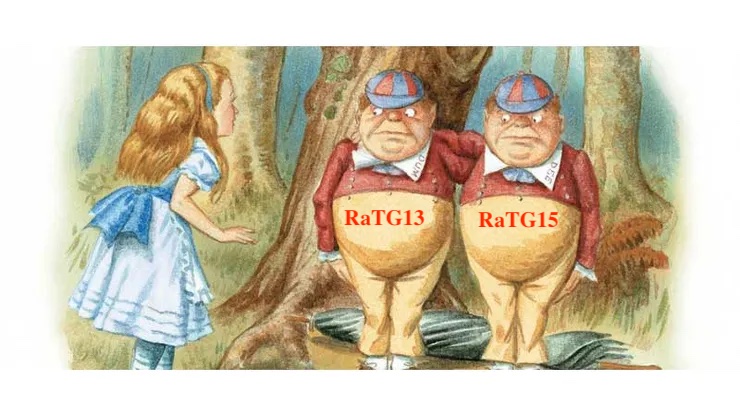
Forensic genomics and epistemic trespassing. I'm in it for the decentralization ! #DeSci Investigating the origin of COVID-19 with #DRASTIC and friends
9 subscribers
How to get URL link on X (Twitter) App


 @RepBradWenstrup @DrJBhattacharya @joniernst 1/ In this thread, I'll show that a dangerous Gain of Function chimera, involving insertion of MERS spike into a novel merbecovirus backbone, can be positively attributed to Zhengli Shi of the Wuhan Institute of Virology, and that NIAID + USAID funds contributed to its creation
@RepBradWenstrup @DrJBhattacharya @joniernst 1/ In this thread, I'll show that a dangerous Gain of Function chimera, involving insertion of MERS spike into a novel merbecovirus backbone, can be positively attributed to Zhengli Shi of the Wuhan Institute of Virology, and that NIAID + USAID funds contributed to its creation

https://x.com/BillyBostickson/status/1983865782649155881In addition, cleavage occurs after secretion into the culture medium, which seems inconsistent with furin as responsible for cleavage during infection


https://twitter.com/jhas5/status/19754001840424021202/ As far back as 2009 it was known that SARS1 spike and E proteins interacted with human ENaC, modulating its activity leading to fluid buildup in the lungs

 @thackerpd @emilyakopp @HansMahncke @ban_epp_gofroc @lewiskamb 2/ While executive focus on GOF is to be welcomed, unfortunately this Executive Order (EO) does not deliver a ban on US GOF research. While it bans funding of dangerous GOF in countries of concern, why does it not do the same in the US ? Why not a blanket ban ?
@thackerpd @emilyakopp @HansMahncke @ban_epp_gofroc @lewiskamb 2/ While executive focus on GOF is to be welcomed, unfortunately this Executive Order (EO) does not deliver a ban on US GOF research. While it bans funding of dangerous GOF in countries of concern, why does it not do the same in the US ? Why not a blanket ban ?

https://x.com/stevenemassey/status/1904619032151810403




 2/ The study by @humblesci @Daoyu15 @BiophysicsFL @ydeigin @quay_dr and myself was published last year and demonstrated unreported GOF experimentation on novel MERS-related coronaviruses in Wuhan prior to the pandemic
2/ The study by @humblesci @Daoyu15 @BiophysicsFL @ydeigin @quay_dr and myself was published last year and demonstrated unreported GOF experimentation on novel MERS-related coronaviruses in Wuhan prior to the pandemic
 2/ Hence Pekar et al undergo extraordinary convolutions in order to try and claim the 2 A/B intermediates, identified by Lv et al 2024, are late arrivals rather than the original intermediates that led to the evolution of lineage B from lineage A
2/ Hence Pekar et al undergo extraordinary convolutions in order to try and claim the 2 A/B intermediates, identified by Lv et al 2024, are late arrivals rather than the original intermediates that led to the evolution of lineage B from lineage A






 @R_H_Ebright @SenGaryPeters @COVIDSelect @BiosafetyNow @CharlesRixey @HSGAC_GOP @RepBradWenstrup @RepRaulRuizMD Virologists often synthesize infectious clones (ICs), which are used to produce live infectious viruses
@R_H_Ebright @SenGaryPeters @COVIDSelect @BiosafetyNow @CharlesRixey @HSGAC_GOP @RepBradWenstrup @RepRaulRuizMD Virologists often synthesize infectious clones (ICs), which are used to produce live infectious viruses
 2/ RaTG13 is (still) phylogenomically the closest coronavirus backbone to SARS2
2/ RaTG13 is (still) phylogenomically the closest coronavirus backbone to SARS2
https://twitter.com/stclairashley/status/1803952107902456202Detaching regional / place names from pathogens is a form of anonymization eg delta, omega etc

 2/ Complete SARS2 spike gene sequences were found in contigs generated from Pseudomonas aeruginosa cultures sampled in 2019, by @iximeno
2/ Complete SARS2 spike gene sequences were found in contigs generated from Pseudomonas aeruginosa cultures sampled in 2019, by @iximeno
 2/ The source of the RaTG13 dataset has been a key puzzle of the C19 Origin debate
2/ The source of the RaTG13 dataset has been a key puzzle of the C19 Origin debate
 2/ In their new paper, the Zhang group sequence 343 new SARS2 genomes from the early pandemic (sampled up to Oct 2020). The genomes were obtained from COVID19 patients in the Shanghai Public Health Center
2/ In their new paper, the Zhang group sequence 343 new SARS2 genomes from the early pandemic (sampled up to Oct 2020). The genomes were obtained from COVID19 patients in the Shanghai Public Health Center

